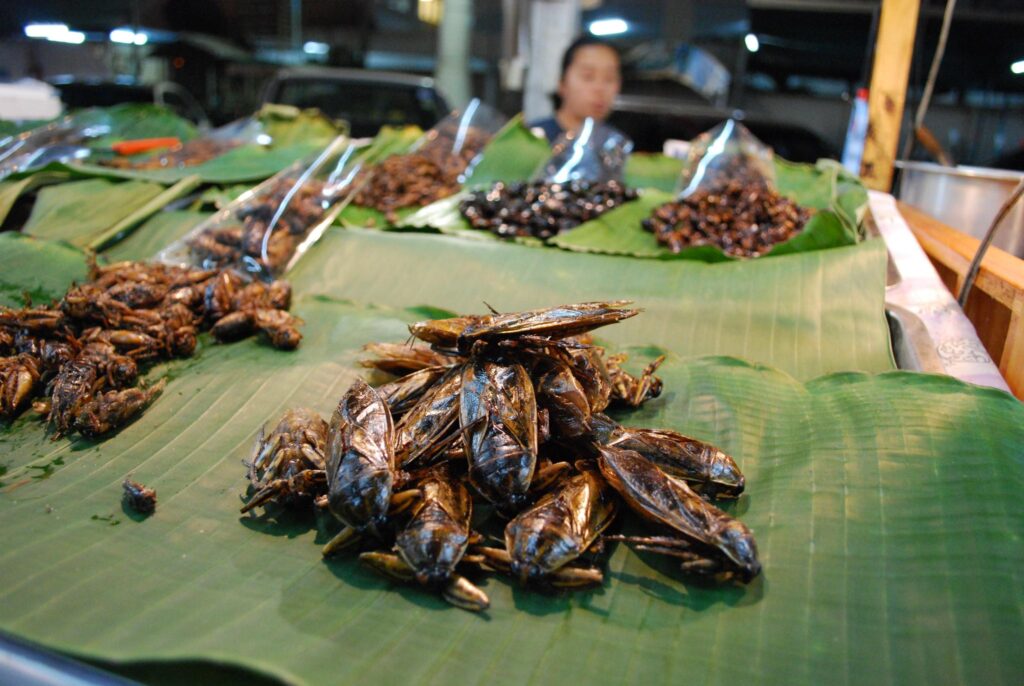
In a world where many go hungry in the context of rapidly changing environments, many experts contend that alternative food sources will be necessary to solve global food security problems. So-called novel food sources are central to this conversation, defined as foods with no history of consumption in a region – or perhaps anywhere.
Three popular examples are lab-grown meat, insect farming, and seaweed aquaculture. Each of these offer opportunities as well as challenges.
Lab-grown meat can refer to actual animal tissues raised in vats as well as the increasingly common cultured plant products made to resemble meat. Lab-grown meat faces push back from the livestock industry that contends it should not be labeled as any kind of meat. While results to date are positive, barriers still remain including concerns over product taste, healthiness, and cost. And while less land- and water-intensive than conventional livestock, cultured meat production is still energy intensive.
Insects do form a significant part of diets across the globe but have yet to be embraced in any substantial way in western cultures. Nutritionally, numerous species of insects are rich in key proteins, micronutrients, and minerals. But the “yuck factor” is a big barrier to cross.
Seaweed is a long-established part of many East Asian diets and has many potential dietary uses. Several selectively bred varieties of seaweed supply a range of valuable nutrients. Growing seaweed does not tax freshwater and terrestrial resources. But intensively cultivated seaweeds would have potential negative effects on local marine ecosystems.
There is no single solution to complex issues like food security. Novel foods may very well form part of the solution to a growing food crisis.
**********
Web Links
Insects, seaweed and lab-grown meat could be the foods of the future
Photo, posted March 12, 2009, courtesy of Flickr.
Earth Wise is a production of WAMC Northeast Public Radio.
Leave a Reply